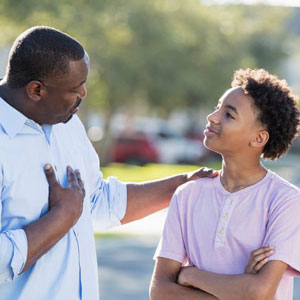ATV Safety
en español: La seguridad de los vehículos todo terreno (VTT)
Medically reviewed by: Patti Miller, MPP
All-terrain vehicles, or ATVs, are off-road vehicles used for things like farm work and riding on trails. In most states, it's legal for teens to ride them, even without a driver's license.
But with the thrills come big risks like rollovers and collisions. Here's how to stay safe on an ATV:
- Be at least 16 years old. Health and safety experts strongly discourage ATV use by anyone younger than 16. Operating an ATV demands that drivers be skilled at making quick adjustments, such as speeding up, slowing down, and shifting their weight to help turn the ATV. People under 16 are less likely to have the physical strength and decision-making experience necessary to drive an ATV safely.
- Get safety certified. Before you ride an ATV on a trail, learn how to do it safely in a controlled setting. Some states require teens to be 16 and have a safety certificate before they can ride an ATV without adult supervision. Visit the ATV Safety Institute's website for course information.
- Ride an ATV that's right for your size and age. Full-size ATVs can weigh more than 600 pounds and be very difficult to handle. Select an ATV designed for your age group, as shown on the manufacturer's warning label on the vehicle.
- Always wear an approved helmet and eye protection. In many states, helmets and eye protection are required by law, particularly for teens. The best helmets for ATV use have a full face shield and meet Department of Transportation safety standards. Many helmets have flip-down visors for eye protection. If yours doesn't, be sure to wear shatterproof goggles and not just sunglasses.
- Wear long pants, long sleeves, gloves, and over-the-ankle boots. ATVs have a high center of gravity and no safety cages, roll bars, or seatbelts. If they tip, you can fall off. Protective clothing will help prevent scrapes and cuts if you get thrown from an ATV.
- Always ride at a safe speed on a trail meant for ATV use. When ATVs get going fast, they become less stable and more likely to tip. ATV tires are not meant for pavement or high speeds. Both of these factors can make turning an ATV difficult and dangerous.
- Know basic first aid to treat minor injuries and be able to get help in an emergency. Be prepared in the event of an accident. Know how to get help if you or a friend are hurt.
- Know and follow the ATV rules of your state. Visit the Consumer Product Safety Commission (CPSC) online for this information. This applies even if you're not the one steering the ATV. Many states don't allow passengers to ride unless the ATV is designed to carry two people.
Finally, here are some absolute ATV "no's":
- Never ride on a 3-wheel ATV.
- Never ride an ATV at night.
- Never ride while under the influence of alcohol or drugs.
- Never ride on paved surfaces or public roads (except to cross them).
- Never exceed the number of passengers recommended by the manufacturer.
- Teens should never give a passenger a ride even if they have a two-person ATV.
Nothing can prevent every accident. The truth is that lots of people get hurt riding ATVs, and some are killed. If you're going to ride an ATV, knowing how to use one safely and following every safety tip can make an accident less likely and help prevent serious injuries if an accident does happen.
Medically reviewed by: Patti Miller, MPP
Date reviewed: July 2018


